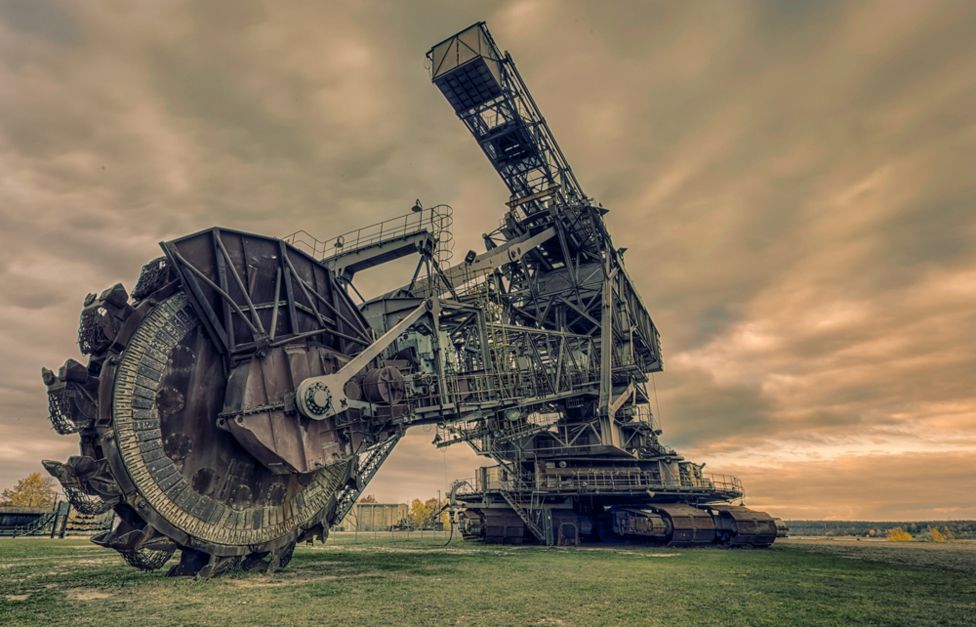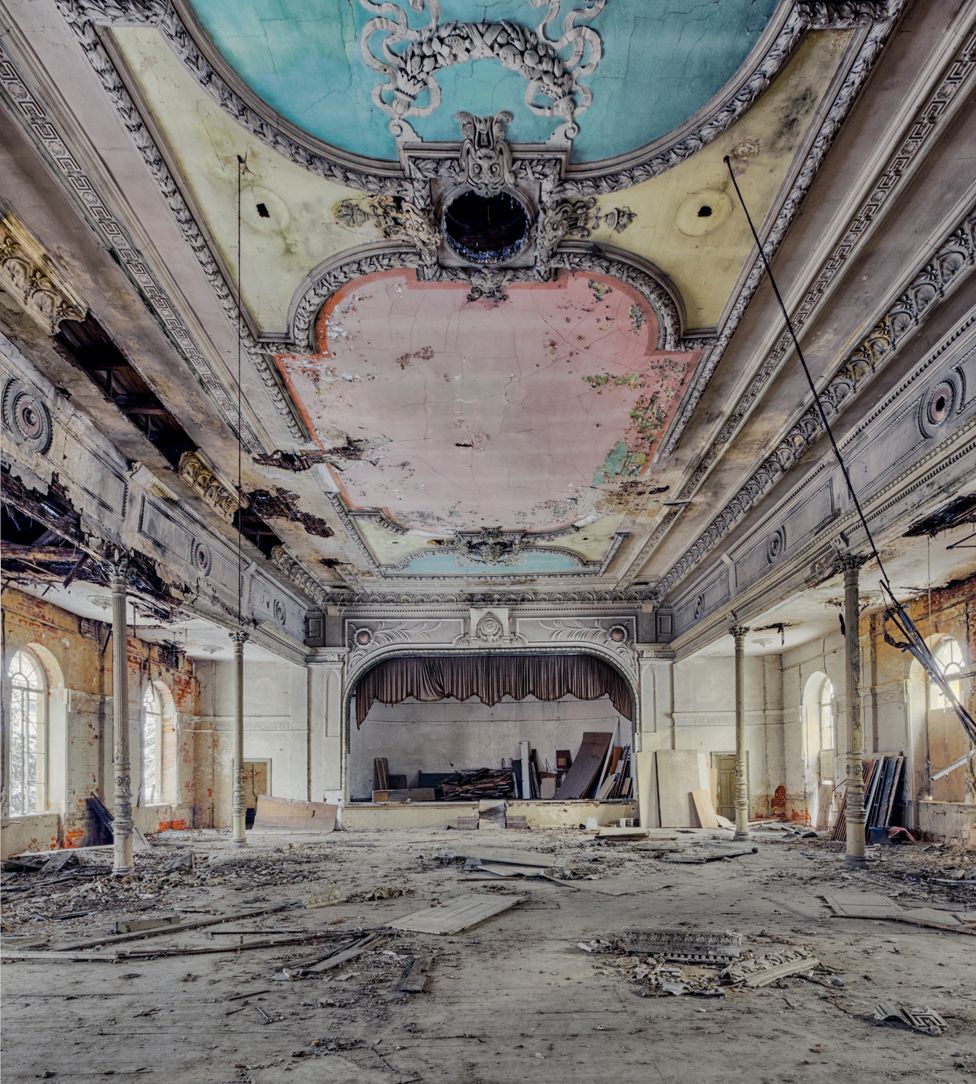BBC: The abandoned buildings of the Eastern bloc
https://www.bbc.com/news/magazine-34575019
I put this article up here to draw attention to it, since I love old abandoned buildings. If the publisher would like for me to take it down notify me, and I will do so.
Christian Richter spent his teens exploring abandoned buildings in what was then Communist East Germany. As an adult he's still doing it, but now he takes a camera to capture the advancing decay of their interiors.
My childhood was surrounded by the industrial, crumbling buildings of the former German Democratic Republic - lots of ramshackle structures, and power stations.
I was 14 years old when the Berlin Wall came down. It was a huge change for us. People didn't know how it would all turn out. It was very exciting - the start of something new. At first we visited the West a lot just to see what it was like, and although quite a few people moved away, I stayed.
Because so many people had left, everything began to fall into disrepair. That's when I started visiting abandoned buildings, sometimes with friends and sometimes on my own. Then much later, when a friend gave me a digital camera, I was able to capture the beauty of these old places.
Find out more
- Christian Richter spoke to Outlook on the BBC World Service
- Listen to the interview on iPlayer
They are very peaceful places because no-one ever goes there. The way they deteriorate, when nature starts to take over, reminds me that everything is transient. There's a feeling that it is the end of time and you don't find that kind of atmosphere anywhere else.
Over the past seven or eight years I must have visited about 1,000 buildings in Germany, France, Belgium, Italy and Poland. I have to go to a lot of places to get one good image or find something that excites me - many of them are just empty and not particularly beautiful.
It's often hard to get inside - I've had to find tunnels or climb through windows. I've travelled long distances to see a building and then found it's been torn down, or I simply couldn't get in.
Sometimes I can tell there might be something special inside, but it's more like a game of chance - maybe I'll find something, maybe I won't. At some point I may hit the jackpot but there's a lot of work behind it - it's very hard to find this kind of beauty.
I once got a tip-off about an old doctor's surgery and I think I was the first person to go inside for 10 or 15 years. It was full of cobwebs and felt slightly mystical. It was like going back in time. The way the light was coming in gave it an amazing atmosphere.
Former industrial plants are also falling into ruin, and psychiatric hospitals have been closed down. No-one looks after them and there's no money for their upkeep - it would be too expensive to preserve them.
When the roof is falling apart and water comes through the ceilings, moss and lichen grow. If the windows are closed it can get very warm in summer and plants start to take over. Often there's a very mouldy smell, but I like it when nature starts taking the building back, and when things are blooming and growing inside.
We used to have lots of inns in the east of Germany - every village had one, with a bar, a ballroom, a function room or a theatre. But as people have left the villages and moved to the towns, they're just not used any more.
When I see an old building in this state I can imagine its former glory, but it's always sad that it's falling apart and not being used.
I keep the locations secret to stop vandals damaging them - some people don't value them and when they get inside it's not just the plants taking over, it's people who are tearing down the banisters or spraying graffiti tags on the walls.
If someone wanted to restore a building, they could write to me and if I thought they were actually the kind of person who might genuinely do something to help, then of course I would try put them in touch with the right people. That would be theoretically possible, but it hasn't happened yet.
I never break in - I always try to find a way to get inside that doesn't involve damaging anything. That might mean going through a hole in the cellar, over a fence, through cracks, through a window - there's a lot of climbing involved. It's hard work and I have to be quite fit. Some buildings are so tightly secured that you have to be a real climber in order to get in without breaking anything.
It is illegal to go into these places and I have been stopped by police - I've been escorted out of buildings two or three times and issued with a notice, but they've never pressed any charges. They seem to let it go because I'm just taking photos.
Some of these places are very atmospheric, very moody. I once photographed a former crematorium where bodies had been burned. It made a deep impression on me.
Another time, I found a beautiful room with a skylight in an abandoned five-star hotel. I think it was a dining room - I could see the old columns and the dirt on the crumbling floor, and this enormous skylight was covered in curtains, and the light was spilling into the whole room.
Then there was an old public bath, possibly built in the 19th Century, with the original changing rooms, magnificent columns and stucco on the ceiling, and of course a big pool in the middle, without water - but on the walls there were the beautiful colours they used back then, yellows and reds, big contrasts. It was really stunning.
The real beauty for me is discovering these places. The photos aren't exactly secondary but they come alongside the discovery itself. I take the photo to give other people a sense of what it's like.
I think people like them for the same reasons I do - this beauty and sadness mixed up. I think people can identify with the fact that even if you have a wonderful, big house right now, at some point everything will decay. Even palaces and villas are transient.
Interview with Christian Richter and translation by Jo Impey.
More from the Magazine
Exploring the grandiose buildings and industrial infrastructure left over from the USSR is a popular pastime for some young people - but not the faint-hearted. Known as urban exploration, the hobby involves climbing high-rise buildings, towers and bridges, or going deep underground. Russia's vast territory is dotted with industrial sites, some of which are unused and empty.
























Comments
Post a Comment